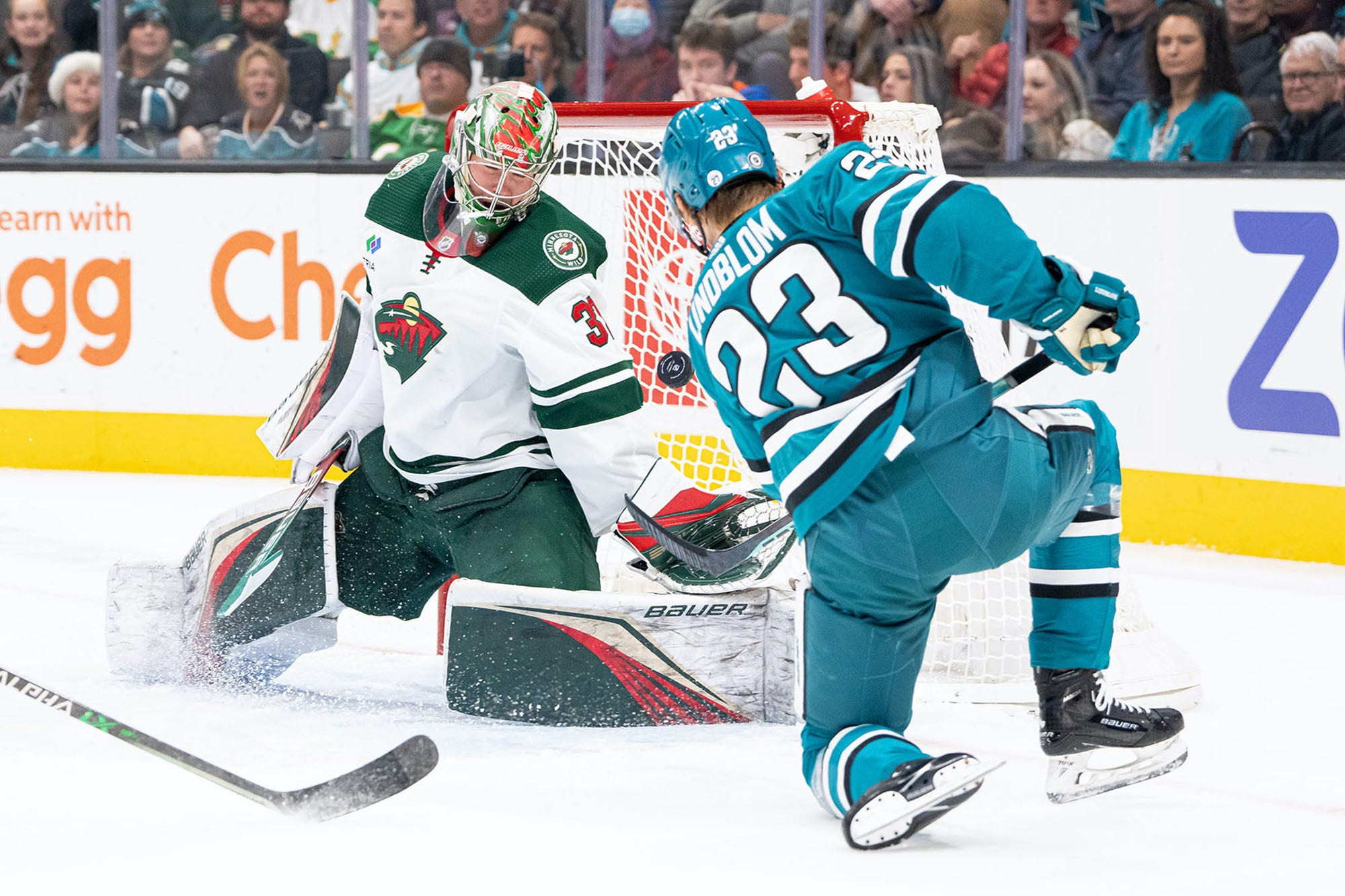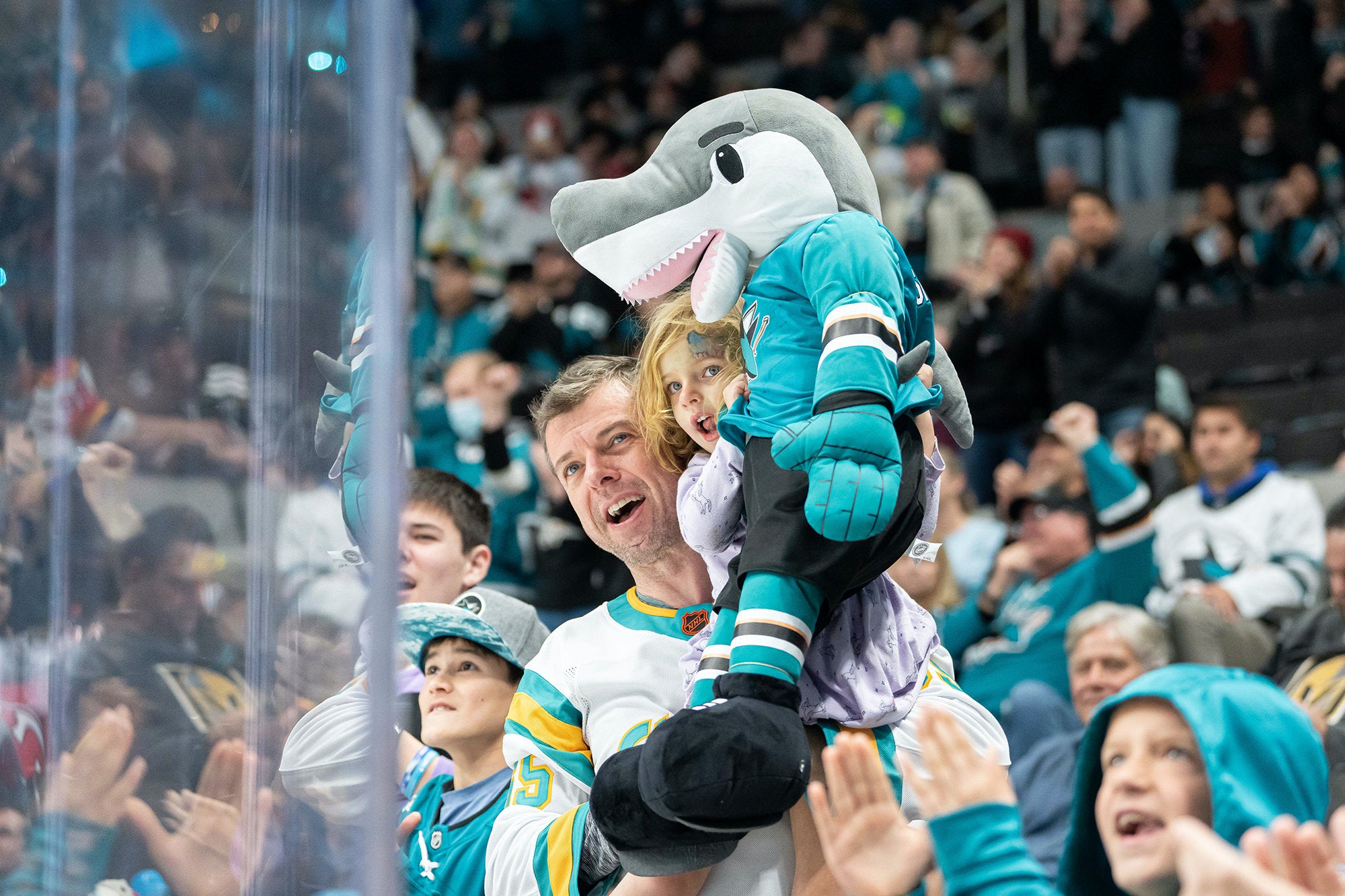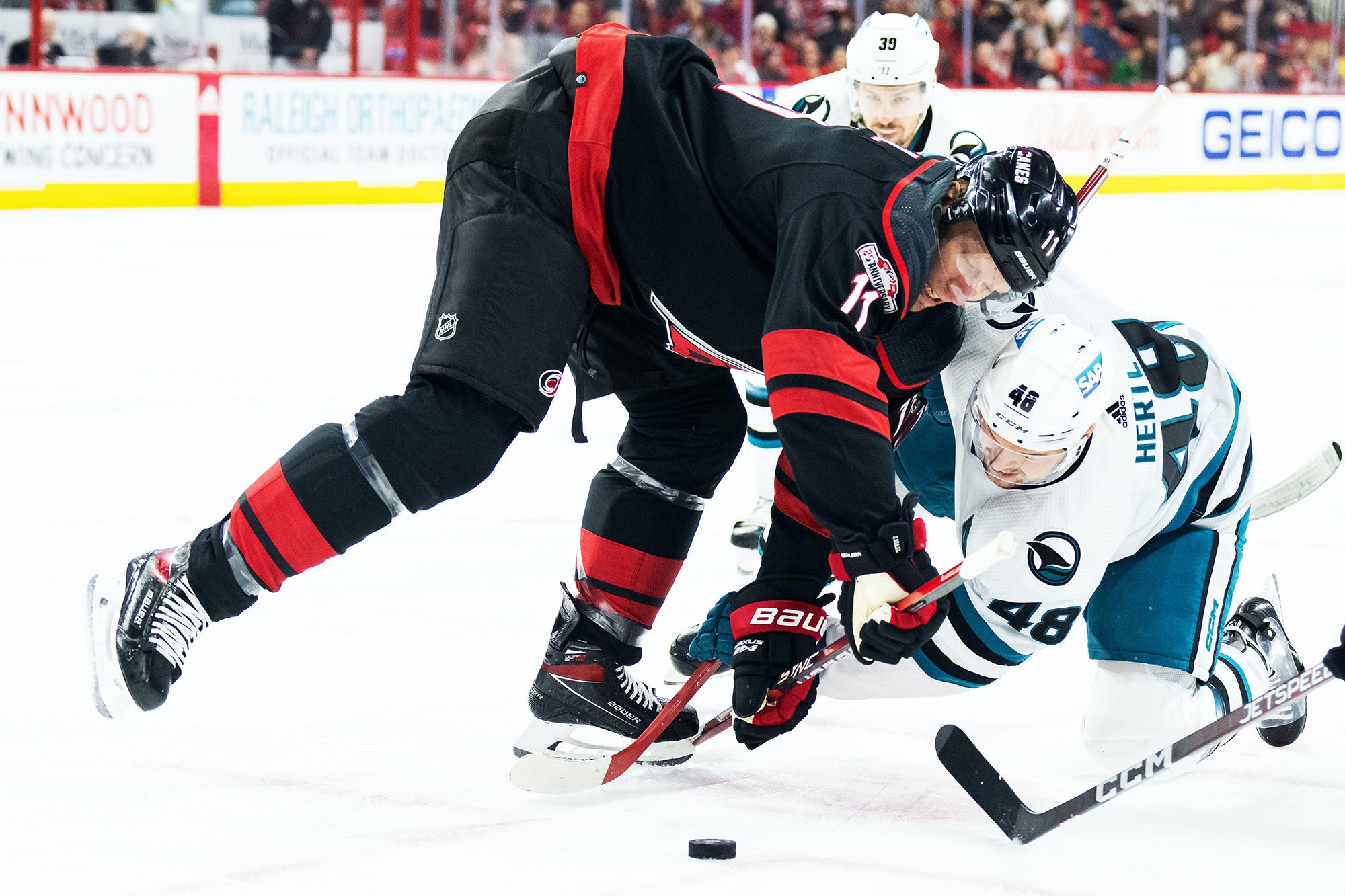Photographer Amanda Cain (@amandajcain) is not only a visual artist and a trailblazer. Beginning her career as a graphic designer then moving into photography, she worked as a university photographer and a freelance news photographer. However, her love of sports was always a major part of her and in 2021, Cain became the San Jose Sharks team photographer, making her the NHL’s first Black female photographer. Throughout Cain’s career, she’s experienced challenges from individual racism, systemic racism and other unjust systems. We sat down with Cain to learn more about these challenges, what she’s taken from them and the long road, challenges and victories in her pathfinding career..

Photo by Amanda Cain. Sony Alpha 1. Sony 70-200mm f/2.8 G Master II. 1/1600-sec., f/3.5, ISO 4000
We talk with San Jose Sharks team photographer Amanda Cain to learn more about the long road, challenges and victories in her pathfinding career.
A Systemic Issue
Career challenges involving race can’t be addressed without addressing the inequalities rooted in systems and organizations. We spoke with Cain about her experiences within the NHL, an organization that is still largely white and with the larger sports industry as a whole. “DEI (diversity equity and inclusion) Initiatives are there, I think most people know. But as far as hierarchy in a majority white sport, I think higher level executives need to allow for more seats at the table. Right now, I feel like they aren’t really asking us how we’re feeling, they’re just talking about issues and then having management relay their message.”

Photo by Amanda Cain. Sony Alpha 1. Sony 20mm f/1.8 G. 1/500-sec., f/1.8, ISO 4000
Cain goes on to talk more about how in most organizations, there needs to be more opportunities for diversity in upper management and more chances for Black employees to speak directly with upper level management. “Just being able to get in that room of executives, presidents, and owners would be great because right now we're not in those rooms, so it's hard to make change from a manager level.”
Another issue Cain pointed out from the systemic side of things is gatekeeping. She gives an example of hiring through connections rather than the traditional hiring process. Only hiring through connections doesn’t allow for people outside your bubble to get into the industry. And in photography specifically, Cain points out that this blocks people from building a portfolio in the arena they want to be in.

Photo by Amanda Cain. Sony Alpha 1. Sony 24-70mm f/2.8 G Master. 1/320-sec., f/2.8, ISO 6400
She recommends those in the hiring position look at photographers' work for their vision and creativity. Even if they haven’t necessarily shot the exact sport or subject you’re hiring for. This is something Cain actively does herself when hiring interns and part-time photographers within the Sharks. This recommendation holds true in cases of tokenism as well, something Cain experienced in past roles. Again, she advises organizations to hire based on skill and creativity, and to get outside of their comfort zone and hire people that don’t necessarily look like them.
Individual Change
The other side of the coin is changes from individuals. And here, Cain talks about gatekeeping in a different capacity: withholding knowledge and information. Cain sums it up well when she states, “I am the first. But I don't want to be the only. Because here is the issue. You're not passing down valuable information for other people.” Again, Cain herself actively shares information with others on her team, empowering them to become strong photographers as well.

Photo by Amanda Cain. Sony Alpha 1. Sony 70-200mm f/2.8 G Master II. 1/1600-sec., f/2.8, ISO 3200
Recommendations For Other Black Artists
Cain has certainly had many experiences in her journey and she’s learned some lessons along the way. First she talks about how young photographers, those in high school or near there, should start sending out emails, understanding what it’s like to work in sports, and to continue to grind. “Keep your space at the table, and speak up for what you want; even if it means filtering some of the words, because they will hear something. Something will stick with them.”
“And you know, if you have dreams, there are a couple of ways to go about it. There was this quote for Instagram or something that says, ‘set your goals, stay quiet about them, and smash them.’ That’s one way to go about it. Some goals I set and I don’t tell anybody. But other goals that I set and I’m going to tell people for accountability.”

Photo by Amanda Cain. Sony Alpha 1. Sony 70-200mm f/2.8 G Master II. 1/1600-sec., f/3.2, ISO 4000
She also says, “Everything works out in the end. That is one thing you have to keep telling yourself. Even when it doesn't work out, it's because you're not seeing it. You’re not outside of it. You're still in it until you're outside of it, until you're past that season of life or the season of the job.”
Being An Ambassador
We asked Cain how she felt being a sort of an ambassador for Black female photographers. She told us, “There are days that get me for sure. Because sometimes being the ambassador or being the person of color or having a seat at the table doesn't always guarantee you the space to feel like you can talk.” She also told us, “I don't necessarily call myself an ambassador yet. Just because I feel like an ambassador is making change. And I think right now, I'm still figuring out how to make change and to keep the change or to keep this space and grow the space.”
While Cain might not see herself as an ambassador yet, we certainly admire the work she’s put into get to where she is and how thoughtful she is about creating space for others. Be sure to follow Cain (@amandajcain) on Instagram to keep up with her work and support her on her journey.

































